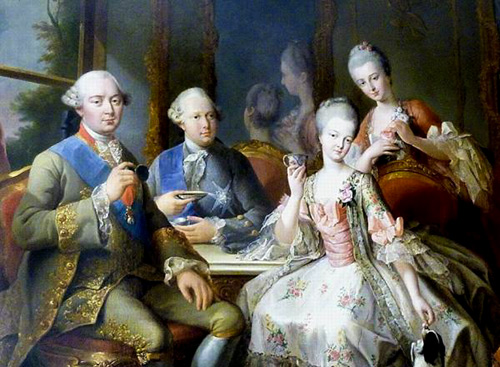Spring may have sprung but the chilly days and nights are far from banished, so what better way of keeping the cool weather at bay, than a deliciously velvety mug of thick hot chocolate?
In the early seventeenth century, we French, being the sophisticated types that we are(!), began to drink an ‘exotic West Indian drink which cures and preserves the body of many diseases’ (according to some early marketing materials). We believed it would cure almost any ailment you care to mention, increase our energy, and act as an aphrodisiac. Ooh la la! (If I’m honest, some of us will still make a case for it being a miraculous cure-all.) Although sugar was added, it wasn’t until around 1727 that milk began to be used, giving us the feel-good beverage we enjoy today.
Chocolate first made an appearance in l’Hexagone as a wedding present for Louis XII and Anna of Austria; needless to say that it really was only for the upper classes and nobility. The rest of us had to wait for The Revolution for it to filter down the ranks.
Louis XV would drink a cup every morning as he was preparing for his day ahead at Versailles – he even devised and made his own recipe. Marie-Antoinette was so fond of its chocolatey goodness that she brought her own chocolatier with her to France when she married Louis’ grandson, Louis XVI. This ‘Chocolate Maker to the Queen’ as he was titled, invented many delicious new hot chocolate recipes, including mixing it with sweet almonds and orange blossoms.
Should you have designs on replicating Louis XV’s recipe, it’s here for your experimentation:
“Place the same quantity of chocolate bars and glasses of water in a coffee maker and boil gently; when you are ready to serve, place one egg yolk for four servings and stir over a gentle heat but do not boil. If prepared the night before, those who drink it every day leave a leaven for the one they make the next day; instead of an egg yolk you may use a whisked egg white after having removed the first mousse, mix it with some of the chocolate from the coffee maker then pour back into the coffee maker and finish the preparation as with the egg yolk.â€
Chocolate bars in this instance are ground and compressed cacao beans, about 4†x 2†x 2†– not the chocolate bars we have today; however you could get something very close by using a bar of plain chocolate which contains 90% cacao (cocoa) solids. ‘Leave a leaven’ simply means to save a few spoonsful of the mixture to use as the basis for the next batch, adding an egg white instead of a yolk.
For a more modern method (circa 1903), why not use Paris café, Angelina’s recipe?
For four servings:
6oz chopped finest-quality semisweet / bittersweet chocolate
¼ cup room temperature water
3 tablespoons hot water
3 cups hot milk, divided
sugar to taste
whipped cream, if desired
- Place the chocolate and water in a double boiler over a low flame, stirring occasionally. Once the chocolate has melted, stir until smooth, and then remove the pan from the heat.
- Vigorously whisk in the hot water, making sure the mixture stays smooth, and then divide the chocolate between four cups. Stir the milk into each cup (or serve it on the side for people to help themselves). Add sugar and whipped cream if desired.
Bon appetit!
